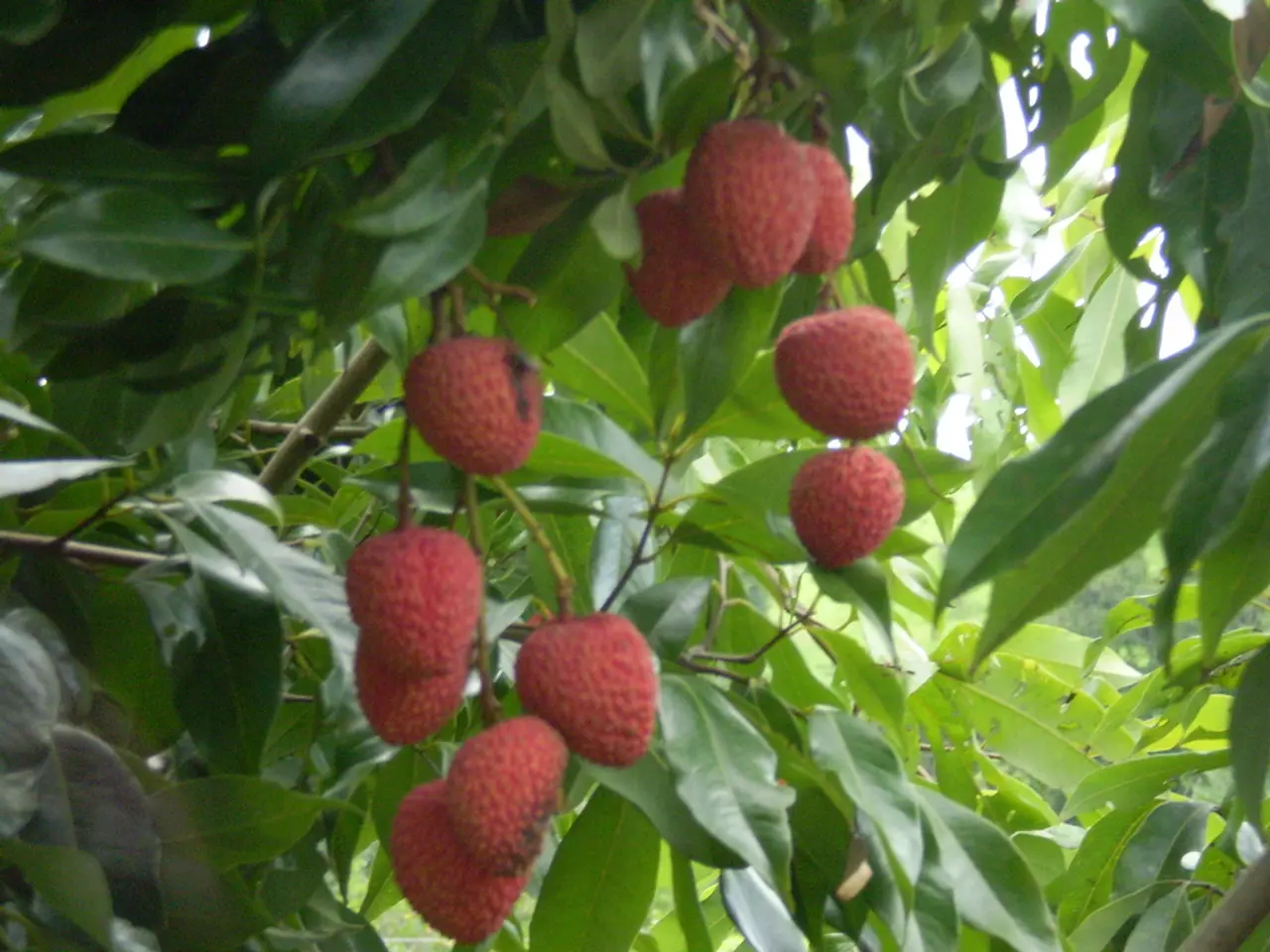Feeding the Strawberry Properly Following Leaf Removal: a Guide for Revitalizing the Berry
In the world of gardening, taking care of strawberries post-harvest is just as important as nurturing them during their growth. Here's a simple guide to help you maintain the health of your strawberry plants and prepare them for robust future yields.
Pruning Strawberries
Pruning is a necessary part of strawberry post-harvest care. For June-bearing strawberries, mow the plants about two weeks after harvest to remove old leaves. This encourages new growth and maintains plant health. For more vigorous patches, thin out runners to avoid overcrowding and promote air circulation, reducing disease risk. Remember, when pruning, avoid damaging the plant's center, where flower buds are formed [1][3].
Disease Prevention
To reduce disease risk, remove fallen fruit and spent leaves promptly. Keep mulch away from the stems to prevent rot, and maintain good airflow by thinning dense patches. Sterilize any pruning tools between cuts using a disinfectant like a 10% bleach solution to prevent spreading pathogens. Applying organic controls such as neem oil or copper fungicides may help manage fungal diseases if needed [2][4].
Watering
Maintaining consistent moisture is essential. Strawberries need about 1 to 1½ inches of water weekly during growth, especially after pruning and during fruit bud formation, to maximize nutrient uptake and plant vigor [1][3][5].
Fertilization
For fertilization, apply a balanced fertilizer twice a year—once post-harvest and once in early spring. This feeding helps plants rebuild carbohydrate reserves for winter dormancy and supports next season’s fruit production. Strawberries need nutrients rich in nitrogen, potassium, and phosphorus. Mineral fertilizers containing these elements are necessary for strawberry recovery and flower bud formation. Simple fertilizers can be used, but always follow the instructions provided [1][3][5].
Soil Care
Consider planting cover crops after removing old strawberry plants to protect soil from erosion, recycle nutrients, and improve organic matter content. Mulching the beds with a 1-2 inch layer of straw (avoiding grass clippings) helps control weeds, conserve moisture, and moderate soil temperature [3].
Additional Tips
Ash infusions (1 liter of ash in 10 liters of water, steeped for 2 days) can improve soil fertility and stimulate microflora development. Wood ash or crushed charcoal can also be used to sterilize and enrich the soil with microelements after pruning. Chicken manure solutions (dilution approximately 1:10-1:15) can also be used to improve soil fertility. Compost and humus can also help improve soil fertility and stimulate microflora development [1][3].
In the fall, only remove heavily damaged leaves to avoid weakening the plant before winter. In spring, perform sanitation pruning by removing damaged leaves.
By following these practices, you can maintain strawberry health, reduce disease, and prepare plants for robust future yields [1][3][5]. Happy gardening!
[1] University of California Agriculture and Natural Resources. (2021). Strawberry Cultivation. https://anrcatalog.ucanr.edu/Details.aspx?itemNo=8270
[2] Cornell University Cooperative Extension. (2021). Strawberry Diseases. https://cce.cornell.edu/cce-tompkins/gardening/diseases-pests/strawberry-diseases
[3] Michigan State University Extension. (2021). Strawberry Production. https://www.canr.msu.edu/news/strawberry-production
[4] Oregon State University Extension Service. (2021). Strawberry Diseases. https://extension.oregonstate.edu/gardening/diseases-pests/fungal-diseases/strawberry-diseases
[5] Pennsylvania State University Extension. (2021). Strawberry Production. https://extension.psu.edu/strawberries
Maintaining a healthy lifestyle for strawberry plants involves pruning them two weeks after harvest to encourage new growth and prevent overcrowding. To ensure home-and-garden success with strawberries, maintain a consistent watering schedule, apply fertilizers rich in nitrogen, potassium, and phosphorus, and consider using organic controls for disease prevention.





